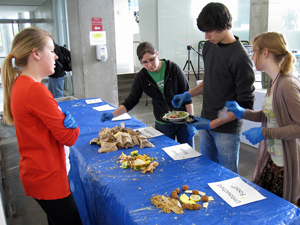Syracuse Views Fall 2025
We want to know how you experience Syracuse University. Take a photo and share it with us. We select photos from a variety of sources. Submit photos of your University experience by sending them directly to Syracuse University News at…

 Two students are trying to change this by getting their fellow students to alter their dining habits. SU Sustainability Division interns Becca Osborne, senior environmental science and renewable energy major at the SUNY College of Environmental Science and Forestry, and Lindsey Adams, senior public health major in SU’s
Two students are trying to change this by getting their fellow students to alter their dining habits. SU Sustainability Division interns Becca Osborne, senior environmental science and renewable energy major at the SUNY College of Environmental Science and Forestry, and Lindsey Adams, senior public health major in SU’s